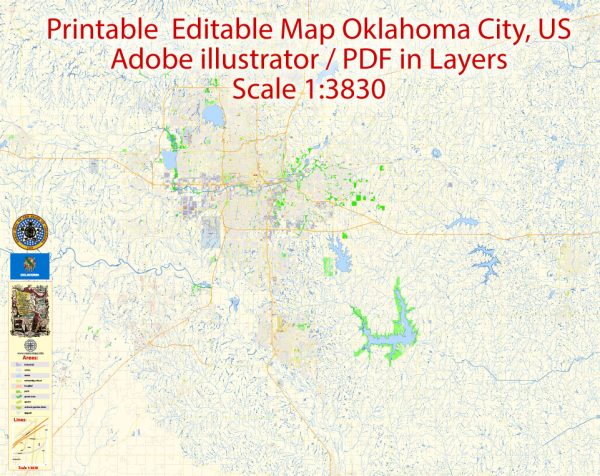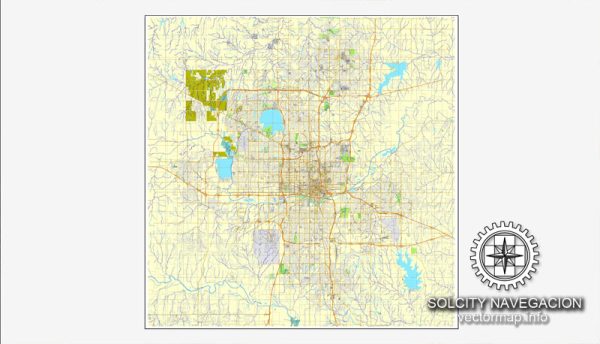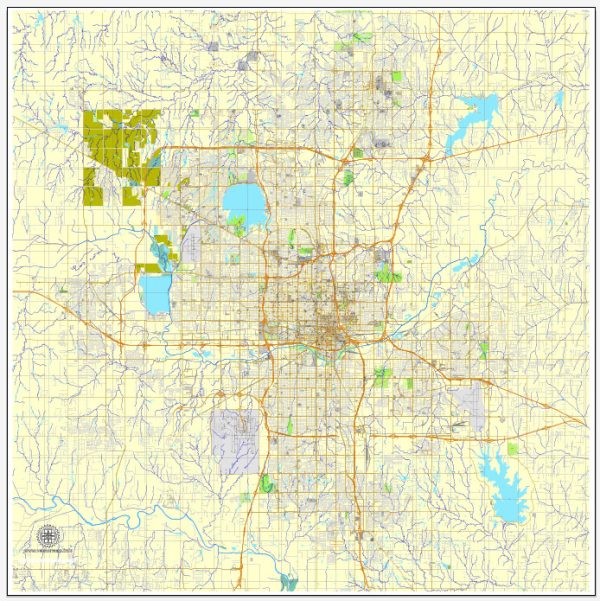Oklahoma City’s history of urban development is a fascinating journey that reflects the city’s growth, challenges, and resilience. The following is a brief overview of key aspects of Oklahoma City’s urban development:
- Land Run of 1889: Oklahoma City was officially founded on April 22, 1889, during the Land Run of 1889, when the U.S. government opened up the Unassigned Lands for settlement. Thousands of settlers rushed in to claim their piece of land, leading to the rapid establishment of the city.
- Early Growth: In its early years, Oklahoma City served as a hub for cattle drives and a stop on the railroad, contributing to its economic growth. The city quickly became a regional trade center.
- Statehood and Capital City: Oklahoma achieved statehood in 1907, and Oklahoma City became the capital. This designation brought increased attention and resources to the city, fostering further development.
- Oil Boom: In the 20th century, the discovery of oil in Oklahoma had a profound impact on the city’s economy. The oil boom brought wealth and increased population to Oklahoma City, leading to the construction of numerous buildings and infrastructure projects.
- Great Depression and Dust Bowl: Like much of the United States, Oklahoma City faced economic hardships during the Great Depression. Additionally, the Dust Bowl of the 1930s had a severe impact on the region, causing agricultural devastation and migration.
- Post-World War II Era: After World War II, Oklahoma City experienced suburbanization and population growth. The city’s economy diversified beyond oil, and industries such as aviation and government services became significant contributors.
- Urban Renewal and Modernization: In the mid-20th century, urban renewal projects aimed at revitalizing the city center. This period saw the construction of new infrastructure, including the I-40 Crosstown Expressway. However, some of these efforts led to the demolition of historic structures and displacement of communities.
- 1995 Oklahoma City Bombing: The Alfred P. Murrah Federal Building bombing in 1995 was a tragic event that deeply impacted the city. The subsequent rebuilding process showcased the community’s resilience, and the Oklahoma City National Memorial now stands as a poignant reminder.
- MAPS Initiative: In the 1990s, the Metropolitan Area Projects (MAPS) initiative was launched, focusing on public improvements and revitalization projects. This included the construction of the Chesapeake Energy Arena, Bricktown Canal, and the Oklahoma River development.
- 21st Century Growth: Oklahoma City continued to experience growth and development in the 21st century. Investments in the downtown area, cultural amenities, and recreational spaces have contributed to the city’s appeal as a place to live and visit.
Oklahoma City’s urban development is a dynamic story of resilience, adaptation to economic changes, and community efforts to shape the city’s future. The city continues to evolve, balancing its historical roots with a vision for a vibrant and sustainable urban environment.




 Author: Kirill Shrayber, Ph.D.
Author: Kirill Shrayber, Ph.D.